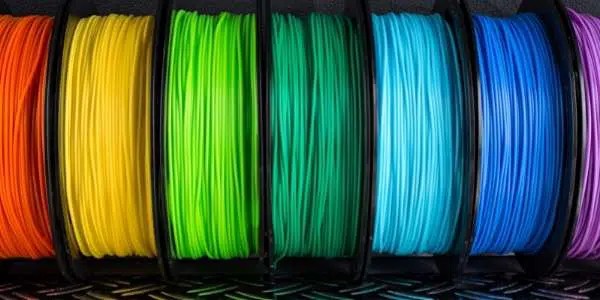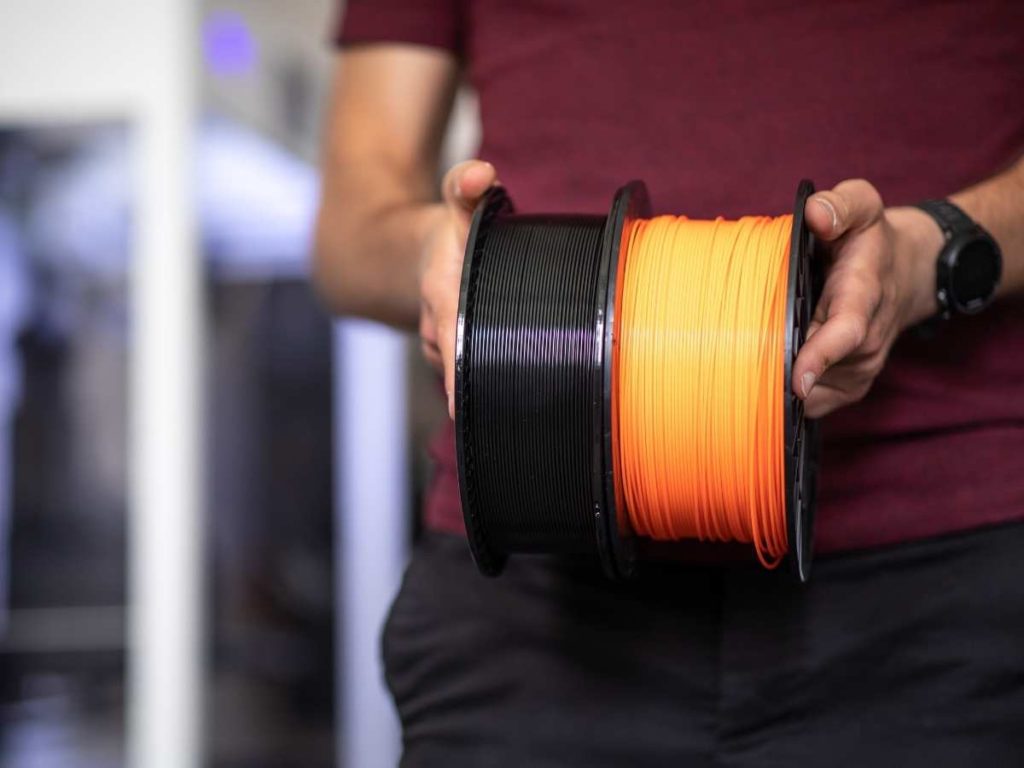Filament brings life to your 3D prints, allowing you to create custom prints with unique colors, thermal properties, flexibility, and strength. However, if you’ve ever heard about how it’s essential to keep your filament sealed away from light and moisture, you’ve probably wondered if you can leave your filament spool running into your 3D printer.
You can leave filament in a 3D printer if the surrounding environment is dry or low in humidity. Filaments tend to absorb moisture quickly, and leaving them in a humid room will cause a decline in filament quality and lead to low-grade 3D prints.
So, let’s talk about when it’s safe to leave your filament in your 3D printer and when it is not. I’ll also tell you more about properly storing your filament so that your spool lasts you as long as it takes to use up all of the filament.
Why You Shouldn’t Leave Filament Inside a Printer
As mentioned, it’s safe to leave the filament inside a 3D printer when the environment isn’t humid. However, since it can be challenging to control environmental conditions, storing your filament in a moisture-proof container is usually best.
Most thermoplastics used to create filaments are hygroscopic and readily absorb moisture. While they can handle an hour or two of exposure, leaving them out in the open for extended periods can damage the filament and affect print quality.
Here are a few reasons why leaving filament out in the open isn’t ideal:
- Filaments become increasingly brittle. The moisture absorption causes the filament to wear out and become brittle, making it harder to print with. Additionally, moisture degrades filament quality, reducing the durability and overall quality of your 3D prints.
- The printer’s hotend can get jammed. When the filament swells up through moisture absorption, it can jam the printer’s hotend. Aside from poor-quality print, the steam created from moist filament can permanently damage specific parts like your nozzle or extruder.
- Bubbling or hissing sounds while printing. When filament absorbs too much moisture, printing with it will cause a bubbling and hissing sound to emanate from the printer. These sounds are due to trapped air bubbles, leading to complications with the printer.
- A higher temperature is necessary for extrusion. As there’s more moisture in the filament, your printer will need to produce excess heat to dehydrate the plastic and convert it into your desired shape. These higher temperatures can damage the more delicate parts of your printer.
These are the primary reasons it’s best to store filament material separately after every print job instead of leaving it in the printer. However, keeping the filament connected to your printer is safe in certain situations.

When It’s OK To Leave Filament Inside the Printer
Absorption of moisture is why leaving filament inside a printer is unsafe. However, in some cases, you can leave the filament in a printer without worrying about it damaging its parts.
For starters, the filament material plays a significant role in moisture absorption. Thermoplastics like nylon and polycarbonate absorb excess moisture and can quickly become brittle if left out in the open.
So if you’re using one of these materials, it’s best to remove the filament from the printer and store it safely after each print.
Materials like PLA and ABS aren’t as absorbent as nylon, and you can be less stringent about leaving them in your printer. However, even with these materials, it’s best to leave them on your printer for no longer than 12 hours before removing them and storing them in a dry place.
You may also consider leaving filament in your printer if you operate in a low-humidity environment or have a dehumidifier to control atmospheric moisture.
How To Store Filament
While you could control atmospheric humidity and get suitable prints, it’s best to remove your filament and store it safely so you can use it longer and keep it in its best condition. Here are a few ways to safely preserve 3D printing filaments.
Vacuumed Bags
Vacuumed bags are perhaps the most straightforward storage option for filament material. I’m not talking about ziplock bags with a simple press-top seal. While they seem airtight, there’s always room for moisture to enter while you zip the bag.
Instead, consider these Space Saver Vacuum Storage Bags on Amazon.com. These bags come with ample storage space and a hand pump to extract all the air from the bag so you can safely store your filaments.
Gel Packs
Silica gel packs usually come with plenty of products where manufacturers are trying to avoid moisture absorption. A silica gel pack may seem like a simple solution, but it’s highly effective at keeping moisture away when storing your filaments.
If you can find them, consider getting silica gel packs with a color indicator that tells you when the gel is saturated with moisture and needs a replacement.
The best part about silica gel is that you can use it even in more straightforward storing options, like Ziploc bags or Tupperware boxes. You only need to place the filament and one or two silica gel packs inside an airtight container.
These are the two most straightforward methods to store and preserve filaments for 3D printing. Of course, these options are ideal for those who have several filament rolls that need protection from moisture.
Still, even if you’ve got just a few filaments as raw material, it’s best to preserve them safely so you can use them to design unique prints.
Final Thoughts
Leaving filament in a 3D printer shouldn’t be a problem, especially if you’re using less absorbent materials like PLA or ABS. However, filaments like nylon or polycarbonate tend to absorb moisture quickly, and it’s best to remove them from the printer and store them safely for future use.
If you’re looking to up your 3D printing game, it’s best to remove and store any filament once you finish printing. Keeping the filament safe from moisture will let you preserve the material longer and ensure your 3D printer runs smoothly.
- Written by:
- Ben
- Last updated:
- 10/25/2023
About Ben
I started 3D printing since 2013 and have learned a lot since then. Because of this I want to share my knowledge of what I have learned in the past years with the community. Currently I own 2 Bambulab X1 Carbon, Prusa SL1S and a Prusa MK3S+. Hope you learn something from my blog after my years of experience in 3D printing.

